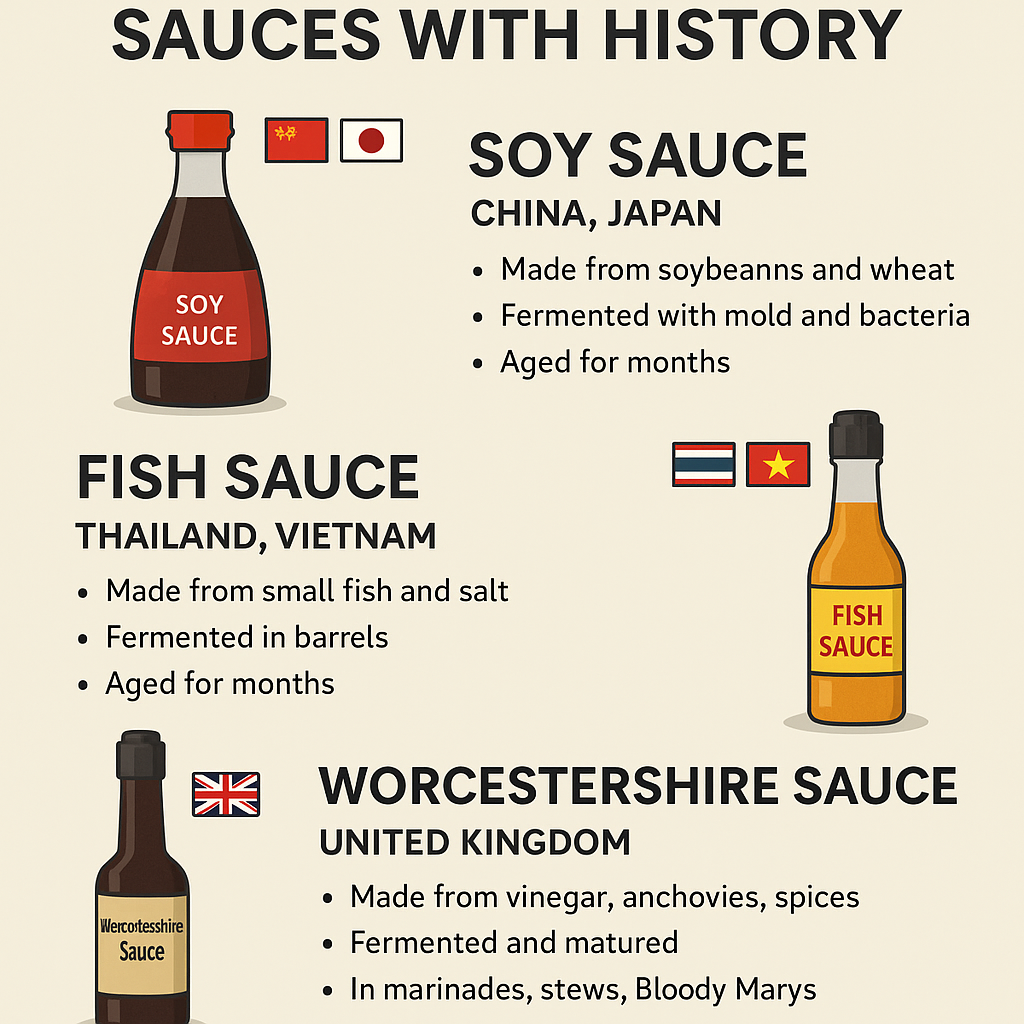In kitchens around the world, fermented liquid sauces are used to add depth and flavor. Three of the most iconic are soy sauce, fish sauce and Worcestershire sauce. Though they come from different parts of the world, all three are made through fermentation – a slow transformation process that brings out strong umami flavors.
1. Soy Sauce – The Asian Classic
🗺 Origin: China, refined in Japan, Korea, Southeast Asia
🥣 Production:
- Made from soybeans, wheat, salt and water
- Fermented with special molds (like Aspergillus oryzae)
- Aged for months before pressing and bottling
🇯🇵 In Japan – Shōyu:
Japan developed its own rich soy sauce culture:
🍶 Types:
1. Koikuchi – Dark, balanced, most common
2. Usukuchi – Lighter color, saltier
3. Tamari – Thick, gluten-free, rich in umami
4. Shiro – Very light, mild
5. Saishikomi – Double-brewed, deep and dark
🍜 Uses:
- For sushi, ramen, marinades and soups
- As table sauce or in cooking
2. Fish Sauce – Heart of Southeast Asia
🗺 Origin: Vietnam, Thailand, Laos, Cambodia, Philippines
🥣 Production:
- Small fish (like anchovies) mixed with salt
- Fermented for months in barrels or jars under the sun
- Liquid is collected and bottled
🍜 Uses:
- In salads (like green papaya), soups (pho), stir-fries and dips
- Strong-smelling but smooth and rich in cooked dishes
3. Worcestershire Sauce – Britain’s Umami Boost
🗺 Origin: United Kingdom (Worcester), 19th century
🥣 Production:
- Vinegar, anchovies, molasses, tamarind, spices, sugar
- Left to ferment and mature for several months
🍜 Uses:
- In marinades, meats, stews and burgers
- Essential in cocktails like Bloody Mary
Conclusion
From Japanese soybeans to Southeast Asian fish and English spice blends, these sauces reflect different cultures solving the same challenge: how to make food last longer and taste better. And all with the help of fermentation. Just a few drops – and your dish comes alive.
